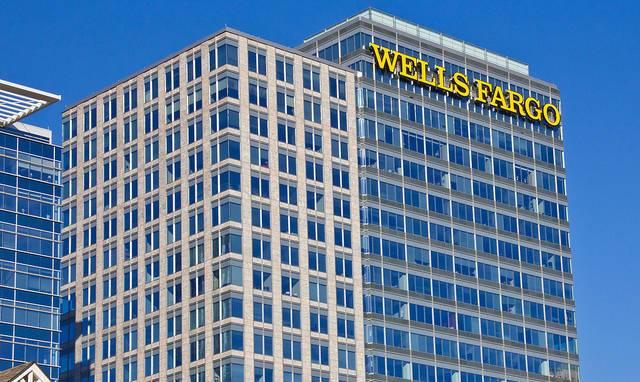
Last week, Wells Fargo reached an agreement in principle to pay $110 million in order to settle a class-action lawsuit filed in a Northern California court over the company’s dubious retail banking practices. The bank expects the exact terms of the settlement to be sorted out by the end of this month.
The trouble started brewing late last summer, when it was revealed that Wells Fargo employees opened as many as 2 million fake banking and credit accounts in order to meet aggressive sales quotas. The uproar continued in September, when it turned out that as many as 5,300 retail employees lost their jobs while the banking giant’s executives appeared to walk away from the scandal scot-free.
The ensuing consumer backlash, and grilling by Congress, soon led former CEO John Stumpf to retire from the company and forego as much as $41 million in unvested stock, salary and executive bonuses.
But for many employees, their careers and professional reputation were left in tatters. Tales of a toxic and punishing corporate culture, marked by goals many considered unattainable, have made the rounds on many a news show.
“They needed to hit their goals, no matter what,” said Susan Fischer, a former Wells Fargo retail banking manager in the Phoenix area, during a CNNMoney interview describing her employees' struggles to meet these directives. “And so it would be phone calls all the time, it would be emails, it would be visits, it would be constant in your face, ‘What are you doing?’”
The company has a long road to recovery from the public-relations fiasco as consumers have either left or avoided Wells Fargo in droves. Earlier this year, the New York Times reported that new credit card applications fell 43 percent during the fall 2016 quarter compared to the year’s previous levels; new checking accounts during the same period tumbled 40 percent.
But Wells Fargo’s critics are quick to point out that it is not clear if the company has learned any lessons from the scandal and resulting customer revulsion. As revealed by the Times and other media outlets last week, the company received a “needs to improve” rating from federal lending regulators on its community lending practices, due to evidence suggesting that discriminatory and illegal credit practices are rampant across the company.
Meanwhile, protests against the company continued last fall. More consumers became aware they were limited in what legal recourse they could take against the bank, as most account and credit card holders were constrained by arbitration clauses. The fine print buried in agreements, signed by consumers when they opened a new account, precluded consumers from joining class-action lawsuits.
Instead, they would have follow an arbitration process, which many consumer advocates say is unfair as judges in such cases tend to favor big companies over individual consumers. As the Washington Post reported, Stumpf found himself stumbling while he was testifying to Congress about the arbitration clauses last fall; the result was a hastening of his exit from the company, while further angering Wells Fargo’s customers and critics of the banking sector at large.
Last week’s settlement will likely do little to mollify those critics. That $110 million figure may sound like a huge sum, especially considering the $185 million in fines that Wells Fargo paid for the fake accounts scandal, which dated back to 2009. The bank expects that sum to wrap up the claims from another 11 class-action lawsuits that are still pending. But as Los Angeles Times reporter James Rufus Koren estimated in a recent column, after attorneys’ fees (which would take approximately 25 percent of that total), the final payout would end up totaling less that $40 per “fake account.”
Koren also interviewed attorneys representing plaintiffs in other class-action lawsuits – and they insist the current settlement as it stands is unfair to Wells Fargo customers (and, from their perspective, unfair to the attorneys working on this litigation). From their point of view, these lawyers worked too hard to let one boutique firm score more than the lion’s share of settlement fees. Of course, a risk for the customers who believe Wells Fargo wronged them is that the ongoing legal wrangling could wind up with no settlement at all.
Whether this settlement is approved or not, Wells Fargo faces a long road ahead as it seeks to both regain its stature within the global banking sector and repair its shattered brand reputation. The company has found itself showcased in business cases -- and not in a flattering light, but as a poster child of unethical corporate behavior.
And as its most recent annual report to the Securities and Exchange Commission disclosed, Wells Fargo is still under several investigations led by federal and state regulators, including accusations that the company skirted rules protecting military personnel from home foreclosures and automobile repossessions while they were on active duty.
Image credit: Ken Teegardin/Flickr

Leon Kaye has written for 3p since 2010 and become executive editor in 2018. His previous work includes writing for the Guardian as well as other online and print publications. In addition, he's worked in sales executive roles within technology and financial research companies, as well as for a public relations firm, for which he consulted with one of the globe’s leading sustainability initiatives. Currently living in Central California, he’s traveled to 70-plus countries and has lived and worked in South Korea, the United Arab Emirates and Uruguay.
Leon’s an alum of Fresno State, the University of Maryland, Baltimore County and the University of Southern California's Marshall Business School. He enjoys traveling abroad as well as exploring California’s Central Coast and the Sierra Nevadas.














